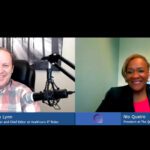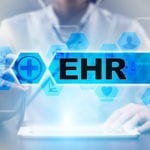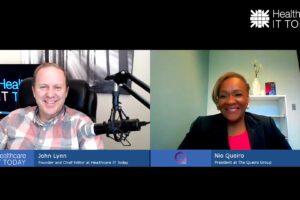Realtime location systems (RTLS) have long been known to help hospitals with medical device management, but there is a new use-case that is growing in popularity and importance: addressing staff safety and duress. Through RLTS platforms, security teams can be alerted to the exact location of staff who need immediate assistance. As violence towards nurses and physicians increases, this will become a more important use-case for this technology.
Increasing Violence and Duress
A recent survey of healthcare workers (hospitals and long-term care facilities) found:
- 90% had experienced (or been in close proximity to) violence from a patient or a patient’s caregiver in the past month
- 75% had encountered both verbal and physical assaults in the past month
- Almost 50% of workers needed to call for security or another co-worker to assist in the past month
The survey did not capture the number of time healthcare workers felt they were under duress, which presumably would be much higher than the actual number of incidents being reported.
RTLS + Staff Safety
Healthcare IT Today sat down with Kapil Asher, Head of the Healthcare Practice at Kontakt.io, a company that makes an RTLS platform to talk about the use-cases for RTLS in healthcare, including staff safety and duress.
“We’ve implemented a Staff Duress solution,” explained Asher. “Using our real time location sensing technology platform and a wearable RTLS badge, we provide them [healthcare workers] with a panic alarm button. Whenever they feel they’re under attack [or in danger], they can click the button and through our software we route it all the way to Security who can respond to the situation in a much faster manner.”
Asher shared the success of their Staff Duress solution at a 150-bed behavioral health center in the Midwest: “As you can imagine, they have violent situations almost on a weekly basis. We identified and created a response workflow for them. Things that could have taken upwards of 3 to 4 minutes before, are being responded to in a matter of seconds.”
In addition to dealing with potential violence and duress, Asher spoke about how RTLS technology can help with infection control. With an RTLS platform, contact tracing could be done in a matter of a few clicks since the location and duration of contact between staff and patients is stored (provided both have RTLS enabled badges/ID bands).
RTLS Considerations
In the past RTLS solutions were expensive and required specialized infrastructure (cabling and access points). Newer solutions, however, are much less invasive and do not require the same up-front investment. This is one of the reasons why more healthcare organizations are considering an RTLS solution.
Asher had practical advice for any healthcare organization looking at RTLS solutions:
- Talk to your clinical/business users and document their needs before going out to look at technologies
- Give thought to how the technology will be implemented. Look for a solution that will not require extensive changes or additions to your existing infrastructure.
- Think about future use-cases for RTLS and not just what you need today. You want a solution that can expand as your needs change.
Kontakt.io has been successful in healthcare because of it’s plug-and-play RTLS system which does not require specialized cabling or other infrastructure. Kontakt.io uses open source BLE and WiFi protocols which means their clients can use their existing network infrastructure. It also means their clients can adopt third-party IOT sensors and have them work within the Kontakt ecosystem.
Watch the full interview with Kapil Asher to learn:
- The basics of RTLS in healthcare
- The incredible ROI that can be realized when RTLS is deployed for healthcare asset management
- How RTLS can help improve wait times and patient workflows
Learn more about Kontakt.io: https://kontakt.io/
Listen and subscribe to the Healthcare IT Today Interviews Podcast to hear all the latest insights from experts in healthcare IT.
And for an exclusive look at our top stories, subscribe to our newsletter.
Tell us what you think. Contact us here or on Twitter at @hcitoday. And if you’re interested in advertising with us, check out our various advertising packages and request our Media Kit.
Kontakt.io is a proud sponsor of Healthcare Scene.
Transcript
[00:00:09] Colin Hung: Hello, and welcome to Healthcare IT Today, where we explore the latest healthcare technology trends and discover valuable insights in health IT. I’m Colin Hung and joining me today is Kapil Asher, head of healthcare practice at Kontakt, a company that makes RTLS solutions. Kapil, welcome to the program.
[00:00:37] Kapil Asher: Thanks for having me.
[00:00:38] Colin Hung: I’m looking forward to talking about RTLS. It’s not a topic we’ve spoken a lot about. I’m excited to dig in here today.
[00:00:47] Kapil Asher: Likewise. I know that there’s a lot of buzz about RTLS. I think breaking it down into different aspects of what technology is, will be really important for your audience to know.
[00:00:59] Colin Hung: So why don’t we start at ground zero Kapil, if you could share with us – what is RTLS? What is that technology?
[00:01:08] Kapil Asher: Okay. So RTLS stands for real time location sensing. Everyone is familiar with how GPS works in the real world … you have apps like WAYZ and Google Maps which are giving you real time location, visibility into resources, and where your car is parked. When you’re driving from spot A to spot B, how do you get there? Without the real time location of these resources, you are lost in the real world.
[00:01:38] What RTLS does, is brings similar technology within the four walls of a building, a big facility, like a hospital or a school or a big manufacturing plant. Because these are almost small cities and contained within themselves. So how do you find resources that are important for your day-to-day work and activity?
[00:02:00] RTLS provides you with that location visibility of critical assets, – tools or medical devices or resources like nurses, staff members, – and it lets you find them in a much faster manner. And then of course, out of that, a lot of different workflows and efficiencies are driven out of it. At the core and the heart of this technology, it’s providing you with real time location, visibility of critical resources.
[00:02:27] Colin Hung: In my head, what I’m getting, is a vision of a map of the inside of a building. And you can see lots of dots and things on that map. Is that kind of what RTLS will do?
[00:02:35] Kapil Asher: It is exactly what it is.
[00:02:36] So If you ever search for a restaurant on Google Maps, it pops up with multiple pins on that region where you’re searching. RTLS does the same thing. If you’re looking for something on a map, it just pops up a bunch of blue dots and tells you where things are.
[00:02:56] Colin Hung: So you mentioned a few different ways in your opening of how people can use RTLS in healthcare
[00:03:04] Kapil Asher: mm-hmm
[00:03:04] Colin Hung: Can you give me an example of, or three solid examples of, how you’ve deployed this in healthcare?
[00:03:13] Kapil Asher: Absolutely Colin. So, you know, RTLS…once you open up the possibilities of locating something, people’s brains start churning and they come up with some use cases, which you or I would’ve never thought of. Once you empower someone with the technology, they find creative ways of using it.
[00:03:34] But I think 80% of our customers use it for medical device tracking. Imagine a hospital that’s a thousand beds. It could span over a million square feet, and it could have upwards of 20-30,000 medical devices like infusion pumps, wheelchairs, stretchers, beds, the list goes on and on. While everyone thinks it’s trivial to not know where your med devices are at any given time, it’s a real problem.
[00:04:12] Nurses require certain kinds of devices to take care of their patients. But when they need one, they don’t have one. And when they don’t want one, they find them lying around everywhere. So how do you provide that visibility? Asset tracking
[00:04:28] Long story short, asset tracking is our big and most widely deployed use-case within the healthcare industry, and we drive some workflows out of that. We provide clinical engineering and biomed folks, the ones who are tasked with repairing and making sure the maintenance and upkeep on these devices are going on. They get to search for them in a much faster manner. Otherwise they’re just manually rounding up and down the whole hospital wasting a lot of time trying to look for equipment.
[00:05:07] The second use case I would like to talk about is staff safety and staff duress. Our nurses are one of the most precious resources within hospitals. God bless them. They do a lot of work…much more than I would say, physicians and other administrators really do. Kudos to them and it’s our responsibility to keep them safe at all times.
[00:05:33] So what we’ve done is implement something called a “Stop Duress” solution, which is almost like a panic alarm button, which is a wearable. Using the real time location sensing technology platform and a wearable RTLS badge, we provide them with a panic alarm button. Whenever they feel they’re under attack by let’s say a violent patient or a visitor that’s just wanting to get more information about their loved ones, but are not getting it and if they feel threatened for their own safety, they can click the panic alarm button and through our software we route it all the way to Security who can respond to the situation in a much faster manner.
[00:06:17] When you talk about staff safety, the other element that comes is hand hygiene.
[00:06:22] So we all understand hospital acquired infections are a big deal. If a patient comes in for one treatment, but then they acquire another disease from the hospital, they lose that top line revenue because they are not reimbursed for any hospital acquired infection.
[00:06:39] Not only do patients acquire infections, but even nurses acquire infections because they’re in so close contact with the patients. Hand hygiene and keeping your hands clean at all times, which is an obvious thing, everyone should do it, but it doesn’t happen when you’re so busy. We have something that detects when hands are washed and how compliant you are with the policies that the hospital has written down. So RTLS helps protect our staff members.
[00:07:16] Finally the third aspect of RTLS would be patient workflows and experience enhancements. We are in a fast-paced world right now. There is a lot of lessons to be learned from consumer space and how customer experience is valued in hospitality and manufacturing and retail. We need to bring that over to healthcare.
[00:07:38] That means reducing wait times. When you’re in a clinic for a simple procedure, you don’t want to wait for hour, two hours to be seen by a doctor. We are providing real time monitoring of the patient flow. When the patient comes in, how long they waited in a particular spot, how long the phases of care are taking, if they have some lab work remaining, how long did that take for the lab work to be completed. Then we identify the bottlenecks where the slowness occurred.
[00:08:11] With this real time data of location, visibility of patients and staff, we can help the hospitals with the evidence-based data that they can use to change certain things. Maybe they can hire new staff members or additional staff members. Maybe they can open up a small facility to reduce the bottleneck. Maybe they can reposition their labs in a way that the patients don’t have to walk too long to get their labs done.
[00:08:40] Anecdotally is one way of doing it. But when you have evidence, it just becomes solid. Those decisions become very easy for the CEO or CIO or CFO.
[00:08:50] So those are a very long answer to your question about the three implementations we do.
[00:08:57] Colin Hung: No, I love it. You talked about asset tracking there at the beginning. You talked about staff safety. You talked about compliance and an infection control application. Now you’re talking about patient workflows.
[00:09:11] Kapil do you have an example specifically from one of your clients where you’ve done this and some of the benefits that they have seen from implementing your solution?
[00:09:20] Kapil Asher: Absolutely. So I can talk about one example use case for the asset tracking piece. We have a hospital called Riverside Medicare. It’s in the outskirts of Chicago, Illinois. They implemented the whole real time location center of med devices to benefit their biomed department. This was back in April of 2020.
[00:09:46] Within one year, they’ve found that they have positive ROI. They were able to improve productivity by at least 1 FTE which is not an easy feat to manage. They were able to reduce their fleet size.
[00:10:03] One other aspect of asset tracking, I didn’t mention earlier was utilization. When you purchase a fleet of equipment, you want to make sure that every piece of equipment is being utilized at the highest rate. But that doesn’t happen. Let’s take infusion pumps for example. They are utilized only about 30% of the. 70% of the time that asset is sitting gathering dust and not being productive.
[00:10:31] So we helped improve their asset utilization by 20-30%. Now they’re putting all the equipment they have in use and they’re able to optimize their fleet size and save on some capital expenditure for not having to buy a buffer quantity of equipment. This has proven to be a very successful deployment for Riverside, from an asset tracking perspective.
[00:10:57] Now for staff duress, I can’t name the customer, but we have a Midwestern behavioral health center in the Dakotas. It’s a 150-bed behavioral health center. As you can imagine, they have violent situations almost on a weekly basis. We are identifying and creating a response workflow for them in a much faster manner. Things that could have taken upwards of three or four minutes before, are in a matter of seconds being responded to. In a physical threat situation, every second matters and we are providing that feature for them.
[00:11:42] From a patient workflow standpoint, I can’t name the hospital, but it is in the Southwest region. We have a big IDN that’s using our patient workflow solutions for their clinic.
[00:11:57] Colin Hung: Mm-hmm
[00:11:58] Kapil Asher: Clinics are getting more fancy. They’re more multidisciplinary. They’re not just one single procedure anymore. They wanted to make sure that their workflows for patients in different phases of care are being more optimized. This particular clinic is using our patient bands.
[00:12:16] They’re using our infrastructure to identify where patients are located and they’re improving their wait times. They’re able to intake more patients.
[00:12:26] Once you reduce your wait time, there is more capacity for you to intake more patients. This particular facility has been able to improve their intake by at least 20% with greater reimbursements.
[00:12:40] Colin Hung: Those are fantastic benefits. Those numbers are significant. You are talking about better asset utilization. You’re talking about patient experience and workflow in that last example. These are all very important things to these healthcare organizations.
[00:12:53] Kapil Asher: Absolutely.
[00:12:55] Colin Hung: Let me ask this question of you Kapil. As an IT department, or as someone responsible for IT at a healthcare organization, what are three things that I can do to make my RTLS implementation go smoothly? Is there anything I can do beforehand? Or is there anything I should do during the implementation?
[00:13:16] Kapil Asher: I think the selection criteria is very important. As an IT department, I’m sure there are a lot of business users, like, nurses, like the biomed. They’re asking IT to help with selection of a technology like this. My advice is always to go back to the business users and ask them what is important. Let’s figure out why do you want RTLS? What is the first two or three items that will help you benefit in your day-to-day life? If you don’t have that charted out in a nice document and have buy-ins from your users then you get completely confused and there’s a lot of garbage information on the internet, which you gets pulled in too. I would say, always talk to your business users, talk to them as a partnership and then go out to select one technology.
[00:14:17] The other thing I would say is pick a technology that is not invasive. There’s a lot of legacy RTLS out there that still requires you to pull cables and POE drops and all of that. Depending on which market you are in that is a very expensive in labor. Pick a technology that’s easy, that’s plug-and-play that can leverage your existing network infrastructure and does not make you invest in a completely new one.
[00:14:50] If you are investing in a new network, it’s a niche application, a point solution that cannot scale. It’ll just stay within that ecosystem. But if you’re able to leverage what you implement then you can expand beyond. That’s always an important thing. Think about the technology and how it can scale and how it can pigeonhole you into one, point solution that has no capability of scalability.
[00:15:17] The third point I would say is think about use cases for now. But then also think about use cases that might arise three to five years later. If your biomed department is talking about asset tracking, that’s great, a very perfect RTLS use case. But there are these ancillary use cases which can also be tapped onto the infrastructure.
[00:15:47] What are those? Interview your business users and ask them – is this a need that you have? If it is, then think of them at the same time and use them to spread your ROI. Use multiple use-cases to spread your ROI, which is what CFOs love.
[00:16:10] This technology investment will affect biomed nurses? patients? everything? We have this ROI that’ll be provided within six months and it’s 3X what our investment is because of X, Y, and Z use-cases. That is an easier sell. If you’re looking at only one use-case it might not take off as fast as you want it to be.
[00:16:32] So those are kind of things to look out for
[00:16:36] Colin Hung: Kapil you mentioned it at the start of your answer…there are lots of solutions or different types of RTLS solutions out there. What makes Kontakt stand out from those others?
[00:16:48] Kapil Asher: Colin you’re right. RTLS market is getting a bit overcrowded. There have been a few legacy players that have dominated this space for the past 10 years. But the reality is these companies are facing a serious lack of innovation and modernization. What I mean by that is, these systems are hard to install because of how invasive their devices are. You need power and data cable pulls. You need an onsite server and highly skilled technicians to go onsite to perform system tuning.
[00:17:18] The implementation fee alone is not affordable for all segments of the market. That’s why RTLS adoption has stagnated to about 30% of the hospitals in the world. Now, this is where Kontakt differentiates itself. We have designed a simple plug-and-play system which is delivered in a box and can be installed by anyone. And I truly mean anyone. We do not require special cabling or skilled engineering time to install and test our systems
[00:17:50] Using the power of AI technology and machine learning, our system provides room level accuracy with absolutely no manual intervention or tuning necessary.
[00:18:01] In most cases, we don’t even send a technician onsite. Everything is done DIY and with our remote engineering support. Also, since we are hosted in the cloud, hospitals don’t need to spend a lot of money, time and dollars in provisioning and maintaining an onsite server.
[00:18:20] Finally we are the only player in the market that utilize open source BLE and WiFi protocols, which opens up opportunities to leverage existing hospital networks. Not only will this help you incorporate other, IOT sensors that Kontakt does not develop, but addresses a specific niche use case within healthcare. We can bring them into our ecosystem.
[00:18:45] This is something legacy RTLS companies cannot do because of how proprietary their networks are and because that monopolistic nature of their system
[00:18:57] Colin Hung: Kapil you’ve shared a lot of information with us today. Thank you very much. Where can people go to find out more information about Kontakt?
[00:19:05] Kapil Asher: Our website is www.kontakt.io. I’ll spell that out for you. It’s K O N T A K T dot IO. We are found on LinkedIn. We are on Twitter. We have a forms-based method of talking to salespeople. You can find me on LinkedIn as well. My name is Kapil Asher and ping me. I’m happy to talk to you.
[00:19:37] Colin Hung: Kapil thank you so much for being on our program today and for answering my questions about RTLS.
[00:19:43] Kapil Asher: Thank you. It was a pleasure.













